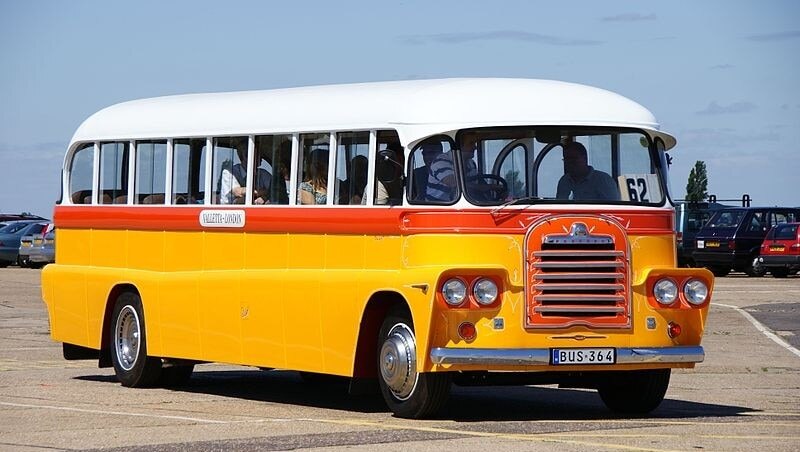-
2026/05/11
New York(EWR) -
2026/05/18
Luqa (Malta)
(Updated: July, 18, 2025 15:03)
Luqa (Malta)
Population
City Code
-
MLA
Popular Airlines
Turkish Airlines
Emirates Airlines
Lufthansa
Flight Time
10~14 hours
The flight time to Luqa (Malta) is approximately 10~14 hours. Find out more about the history, economy, climate and transportation options before you visit Luqa (Malta).
Compare Airfares for Flights to Luqa (Malta)
Malta, a small historic city in the Mediterranean Sea
Malta, a small yet vibrant historic city nestled in the heart of the Mediterranean Sea, is a captivating destination known for its rich heritage, cultural diversity, and strategic importance throughout history. As the capital city of Valletta and a UNESCO World Heritage Site, Malta offers an impressive array of ancient architecture, centuries-old churches, and fortified walls that reflect its legacy as a stronghold for the Knights of St. John. Tourists are drawn to Malta for its beautiful harbors, charming alleyways, museums, and festivals that celebrate both European and North African influences. Despite its compact size, Malta plays a growing role in the regional economy with strong sectors in tourism, finance, and maritime services. Conveniently accessible via Malta International Airport (MLA), the island offers reliable public transport and ferry services, making it easy for travelers to explore nearby cities and coastal sites. With year-round sunshine, rich cultural offerings, and modern infrastructure, Malta stands out as a Mediterranean gem for history lovers and global explorers alike.
History
Malta, strategically located in the center of the Mediterranean, has a long and storied history that has shaped its identity as one of Europe’s most culturally rich tourism destinations. From the prehistoric temples of Ħaġar Qim and the legacy of the Phoenicians, Romans, and Arabs, to the grandeur of the Knights of St. John and its pivotal role during World War II, Malta stands as a living testament to centuries of global influence. Its geographic position made it a natural crossroads for trade and military power, and this heritage is reflected in its fortified cities, harbors, and UNESCO-listed capital, Valletta. Over time, Malta has transformed into a modern, tourism-driven economy while preserving its historic urban fabric, offering visitors a seamless blend of ancient charm and contemporary amenities. Today, Malta continues to thrive as a small island nation that captivates travelers with its dramatic past, walkable cities, and picturesque coastal views.
Economy
Malta, though small in size, plays a dynamic role in the regional economy of the Mediterranean, known for its strategic location, diversified industries, and pro-business environment that continues to attract international companies and investors. As a member of the European Union, Malta has become a hub for financial services, iGaming, maritime trade, and tech innovation, earning high marks in global economic rankings for stability, digital readiness, and regulatory transparency. Its compact urban scale allows for efficient governance and infrastructure, while English as an official language adds to its global appeal for startups and multinational firms. Tourism also remains a major pillar of Malta’s economy, with millions of visitors annually driving demand in hospitality, real estate, and cultural experiences. Combining a rich historical backdrop with a forward-looking business climate, Malta stands out as an ideal destination for both leisure travelers and business professionals seeking opportunities in a vibrant, globally connected setting.
Budget Airfares
Malta is one of the most accessible destinations in the Mediterranean, with efficient international connectivity and a reliable local transportation system that makes getting around the island simple and convenient. The main gateway is Malta International Airport (MLA), located just a short drive from the capital, Valletta, and serving as the island’s only commercial airport. Despite its modest size, the airport is modern and well-equipped, offering flights to and from major European hubs via full-service and low-cost carriers such as Ryanair, EasyJet, Lufthansa, and Air Malta. For travelers on a budget, these airlines provide affordable options and frequent connections across the continent. Once in Malta, getting around is easy thanks to a well-developed public bus network, taxi services, ride-sharing apps, and organized tours, while ferries connect popular seaside towns and neighboring islands. With short travel distances and tourist-friendly infrastructure, Malta offers visitors a seamless travel experience from arrival to exploration.
Local Climate / Weather
Malta enjoys a classic Mediterranean climate with hot, dry summers and mild, wet winters, making it a popular year-round destination for both leisure and cultural tourism. Summer months from June to September are sunny and dry, with average temperatures reaching 30°C (86°F), attracting beach lovers and festivalgoers to Malta’s beautiful coastlines and open-air events. Spring and autumn offer more moderate weather, ideal for sightseeing, hiking, and exploring historic sites without the crowds, while the cooler, rainier winter season—from November to February—still provides a comfortable escape for travelers seeking mild European winters. The island receives over 300 days of sunshine annually, which boosts outdoor tourism and allows for an extended travel season well beyond the traditional summer peak. Thanks to its stable, sunny weather and scenic landscapes, Malta is a versatile destination that appeals to travelers in every season.
Transportation Modes
Malta features a well-connected and budget-friendly transportation system that makes navigating the island both convenient and enjoyable for tourists. The primary mode of public transport is an extensive and reliable bus network that reaches nearly every town, village, and major tourist attraction, with main routes running from the capital, Valletta. Operated by Malta Public Transport, the system offers affordable tickets and travel cards suited for short-term visitors and long stays alike. While Malta does not have trains or subways, taxis and ride-hailing apps are readily available, and car rentals are popular among travelers looking to explore the island at their own pace. For a scenic alternative, ferries connect Valletta with popular seaside spots like Sliema and the Three Cities, offering stunning views along the way. With clearly marked routes, English-language signage, and tourist-friendly pricing, Malta’s transportation system ensures that visitors can travel smoothly while experiencing the country’s rich history and beautiful landscapes.
Travel FAQs
When is the best time to visit Malta?
The best time to visit Malta is during spring (April to June) and autumn (September to October) for pleasant weather and fewer crowds.
What are some must-try dishes in Malta?
Must-try dishes in Malta include rabbit stew (fenek), pastizzi, bragioli, and fresh seafood.
Which areas are recommended for accommodation in Malta?
Recommended areas include Valletta for culture and history, Sliema for shopping and nightlife, and St. Julian’s for seaside resorts.
What are the shopping hotspots in Malta?
Popular shopping areas include The Point Shopping Mall in Sliema, Republic Street in Valletta, and Bay Street in St. Julian’s.
What public transport passes are available in Malta?
The Explore Card and Tallinja Card are widely available for unlimited travel on public buses across Malta.


